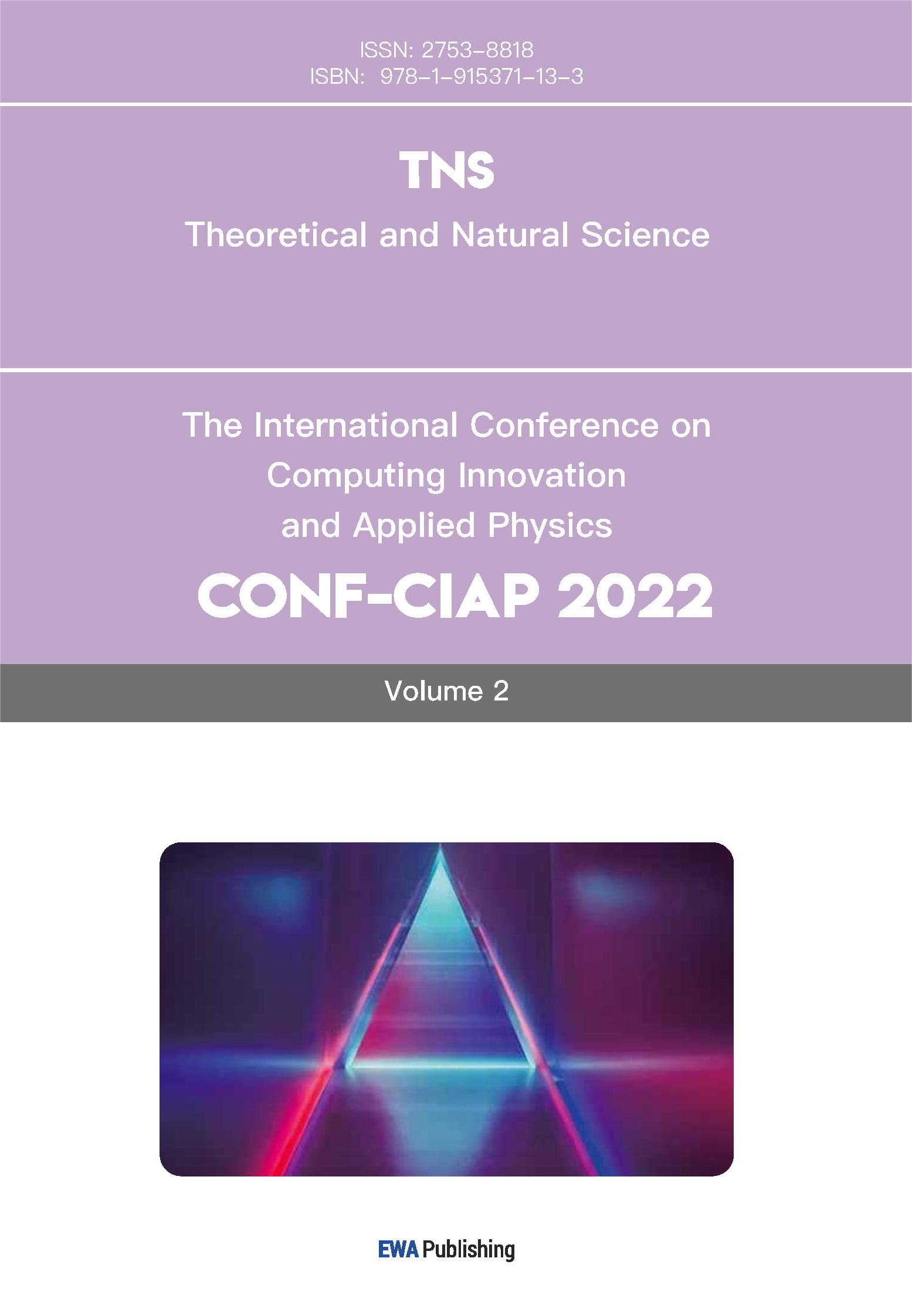References
[1]. Dunlay SM, Givertz MM, Aguilar D, et al. (2019) Type 2 Diabetes Mellitus and Heart Failure: A Scientific Statement From the American Heart Association and the Heart Failure Society of America: This statement does not represent an update of the 2017 ACC/AHA/HFSA heart failure guideline update. Circulation. 140(7): e294-e324. doi: 10.1161/CIR.0000000000000691
[2]. From A.M, Scott C.G, Chen H.H. (2010) The development of heart failure in patients with diabetes mellitus and pre-clinical diastolic dysfunction a population-based study. J Am Coll Cardiol. 55(4): 300-305. doi: 10.1016/j.jacc.2009.12.003
[3]. Rubler S., Dlugash J., Yuceoglu Y.Z., Kumral T., Branwood A.W., Grishman A. (1972) New type of cardiomyopathy associated with diabetic glomerulosclerosis. Am J Cardiol. 30(6): 595-602.
[4]. Jia G., Hill M.A., Sowers J.R. (2018) Diabetic Cardiomyopathy: An Update of Mechanisms Contributing to This Clinical Entity. Circ Res. 122(4): 624-638.
[5]. Ritchie R.H., Abel E.D. (2020) Basic Mechanisms of Diabetic Heart Disease. Circ Res. 126(11): 1501-1525. doi: 10.1161/CIRCRESAHA.120.315913
[6]. Boudina S., Abel E.D. (2007) Diabetic cardiomyopathy revisited. Circulation. 115(25): 3213-3223. doi: 10.1161/CIRCULATIONAHA.106.679597
[7]. Yang P., Feng J., Peng Q., Liu X., Fan Z. (2019) Advanced Glycation End Products: Potential Mechanism and Therapeutic Target in Cardiovascular Complications under Diabetes. Oxid Med Cell Longev. 2019: 9570616. doi: 10.1155/2019/9570616
[8]. Anderson M.E., Brown J.H., Bers D.M. (2011) CaMKII in myocardial hypertrophy and heart failure. J Mol Cell Cardiol. 51(4): 468-473. doi: 10.1016/j.yjmcc.2011.01.012
[9]. Bugger H., Abel E.D. (2014) Molecular mechanisms of diabetic cardiomyopathy. Diabetologia. 57(4): 660-671. doi: 10.1007/s00125-014-3171-6
[10]. Ramesh P., Yeo J.L., Brady E.M., McCann G.P. (2022) Role of inflammation in diabetic cardiomyopathy. Ther Adv Endocrinol Metab. 13: 20420188221083530.
[11]. Ridker P.M., Everett B.M., Thuren T., et al. (2017) Antiinflammatory Therapy with Canakinumab for Atherosclerotic Disease. N Engl J Med. 377(12): 1119-1131.
[12]. Vinik A.I., Maser R.E., Mitchell B.D., Freeman R. (2003) Diabetic autonomic neuropathy. Diabetes Care. 26(5): 1553-1579. doi: 10.2337/diacare.26.5.1553
[13]. McMurray J.J.V., Solomon S.D., Inzucchi S.E., et al. (2019) Dapagliflozin in Patients with Heart Failure and Reduced Ejection Fraction. N Engl J Med. 381(21): 1995-2008.
[14]. Anker S.D., Butler J., Filippatos G., et al. (2021) Empagliflozin in Heart Failure with a Preserved Ejection Fraction. N Engl J Med. 2021; 385(16): 1451-1461.
[15]. Heerspink H.J.L., Stefánsson B.V., Correa-Rotter R., et al. (2020) Dapagliflozin in Patients with Chronic Kidney Disease. N Engl J Med. 383(15): 1436-1446. doi: 10.1056/NEJMoa2024816
[16]. Saucedo-Orozco H., Voorrips S.N., Yurista S.R., de Boer R.A., Westenbrink B.D. (2022) SGLT2 Inhibitors and Ketone Metabolism in Heart Failure. J Lipid Atheroscler. 11(1): 1-19.
[17]. Baartscheer A., Schumacher C.A., Wüst R.C., et al. (2017) Empagliflozin decreases myocardial cytoplasmic Na+through inhibition of the cardiac Na+/H+ exchanger in rats and rabbits. Diabetologia. 60(3): 568-573. doi: 10.1007/s00125-016-4134-x
[18]. Marso S.P., Daniels G.H., Brown-Frandsen K., et al. (2016) Liraglutide and Cardiovascular Outcomes in Type 2 Diabetes. N Engl J Med. 375(4): 311-322. doi: 10.1056/NEJMoa1603827
[19]. Marso S.P., Bain S.C., Consoli A., et al. (2016) Semaglutide and Cardiovascular Outcomes in Patients with Type 2 Diabetes. N Engl J Med. 375(19): 1834-1844. doi: 10.1056/NEJMoa1607141
[20]. Holman R.R., Bethel M.A., Mentz R.J., et al. (2017) Effects of Once-Weekly Exenatide on Cardiovascular Outcomes in Type 2 Diabetes. N Engl J Med. 377(13): 1228-1239.
[21]. Kosiborod M.N., Abildstrøm S.Z., Borlaug B.A., et al. (2023) Semaglutide in Patients with Heart Failure with Preserved Ejection Fraction and Obesity. N Engl J Med. 389(12): 1069-1084.
[22]. Kosiborod M.N., Petrie M.C., Borlaug B.A., et al. (2024) Semaglutide in Patients with Obesity-Related Heart Failure and Type 2 Diabetes. N Engl J Med. 390(15): 1394-1407.
[23]. Dormandy J.A., Charbonnel B., Eckland D.J., et al. (2005) Secondary prevention of macrovascular events in patients with type 2 diabetes in the PROactive Study (PROspective pioglitAzone Clinical Trial In macroVascular Events): a randomised controlled trial. Lancet. 366(9493): 1279-1289. doi: 10.1016/S0140-6736(05)67528-9
[24]. Scirica B.M., Bhatt D.L., Braunwald E., et al. (2013) Saxagliptin and cardiovascular outcomes in patients with type 2 diabetes mellitus. N Engl J Med. 369(14): 1317-1326.
[25]. Eurich D.T., Majumdar S.R., McAlister F.A., Tsuyuki R.T., Johnson J.A. (2005) Improved clinical outcomes associated with metformin in patients with diabetes and heart failure. Diabetes Care. 28(10): 2345-2351. doi: 10.2337/diacare.28.10.2345
[26]. Shah K.S., Xu H., Matsouaka R.A., et al. (2017) Heart Failure With Preserved, Borderline, and Reduced Ejection Fraction: 5-Year Outcomes. J Am Coll Cardiol. 70(20): 2476-2486.
[27]. Lam C.S.P., Arnott C., Beale A.L., et al. (2019) Sex differences in heart failure. Eur Heart J. 40(47): 3859-3868c. doi: 10.1093/eurheartj/ehz835
[28]. Goldman A., Fishman B., Twig G., et al. (2023) The real-world safety profile of sodium-glucose co-transporter-2 inhibitors among older adults (≥ 75 years): a retrospective, pharmacovigilance study. Cardiovasc Diabetol. Jan 24, 22(1): 16.



